Editor’s Note: The Astana Times introduces a new series, Exploring Kazakhstan, City by City. We are setting out to unveil the rich diversity of Kazakhstan’s cities. Starting with Zhezkazgan, Shymkent and Taldykorgan, we continue our journey in the glorious city of Karagandy. By exploring each city’s unique history and culture, we aim to bring you closer to the heart and soul of Kazakhstan.
ASTANA – Karagandy, the fourth largest city in Kazakhstan, is renowned as the coal capital of the country. However, it is not merely about the mining industry. Its tourist spots reveal much about the region’s history, cultural heritage, scientific advancements, and urban development.
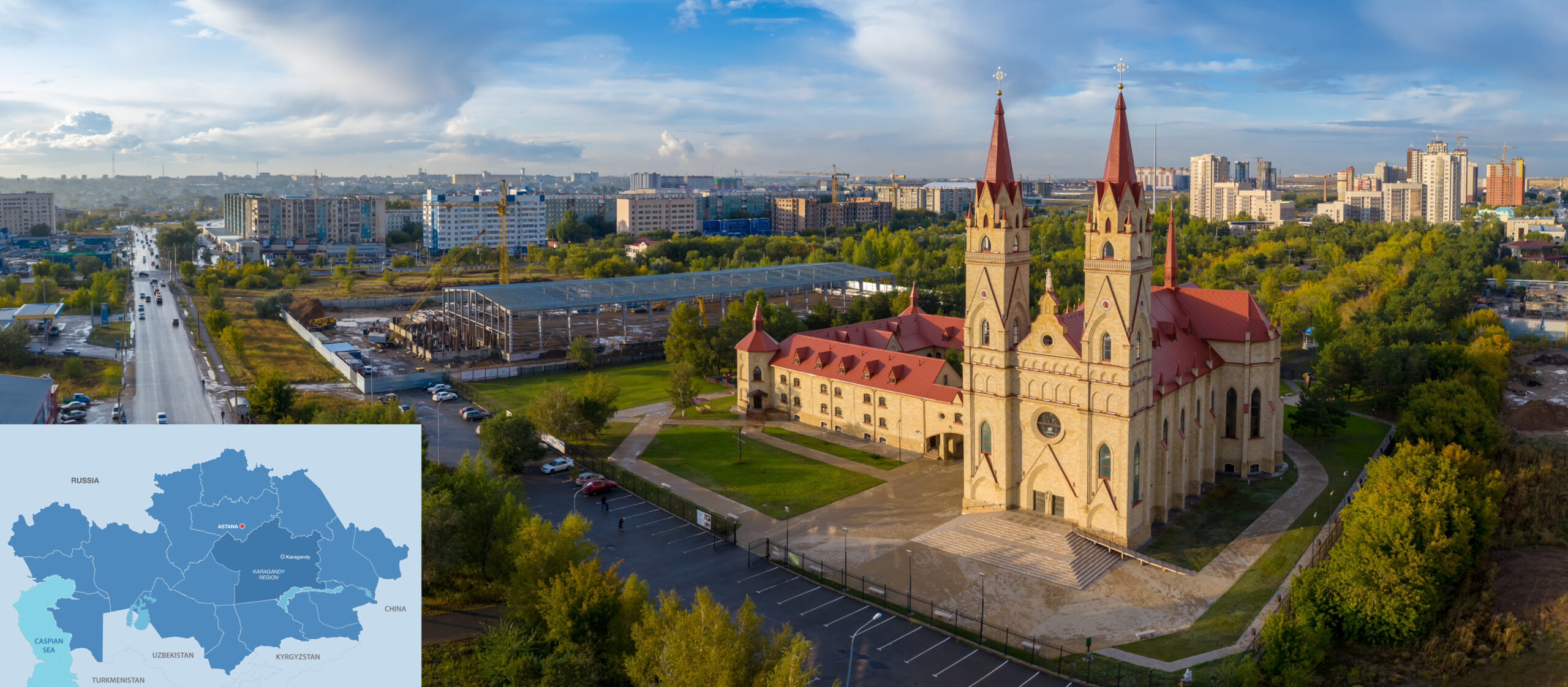
Karaganda’s Cathedral of the Blessed Virgin Mary of Fatima was modeled after the Cologne Cathedral in Germany. Photo credit: shutterstock.com. Click to see the map in full size. The map is designed by The Astana Times
Established as a city back in 1934, Karagandy has since become a cornerstone of both the nation’s economy and cultural vitality. In February this year, the administrative center of the Karagandy Region marked its 90th anniversary. On this occasion, Karagandy held celebratory events for the public.
Miners’ Palace of Culture
One of the festivities was the jubilee gala concert, which was held on the stage of the Miners’ Palace of Culture. For many years, the palace has been the city’s emblem. The iconic landmark hosts the most important cultural events within its walls.

The Miners’ Palace of Culture. Photo credit: wildticketasia.com.
The exterior design of the building merged classical Western European and Eastern architecture. The main facade of the rooftop features figures of a miner, a builder, a shepherd with a lamb, a collective farm woman with a sheaf, an akyn (a poet in Kazakh) with a dombra (national musical string instrument), and a warrior. Famous Soviet sculptor Yevgeny Vuchetich crafted the sketches.
On the opposite side of the palace, visitors can view the Miners’ Glory monument, which was erected in 1974 to commemorate the production of two million tons of coal in the Karagandy coal basin, one of the world’s largest coal basins.
Prominent Kazakh geologist Kanysh Satpayev made a significant contribution to the discovery of large coal reserves in the subsoil.
Karlag Museum
One of the most visited sites in the Karagandy Region is the Karlag Museum, a storehouse of a tragic history of the Soviet past. Located in the village of Dolinka, 40 kilometers from the city, the museum is dedicated to the memory of the victims of political repression.
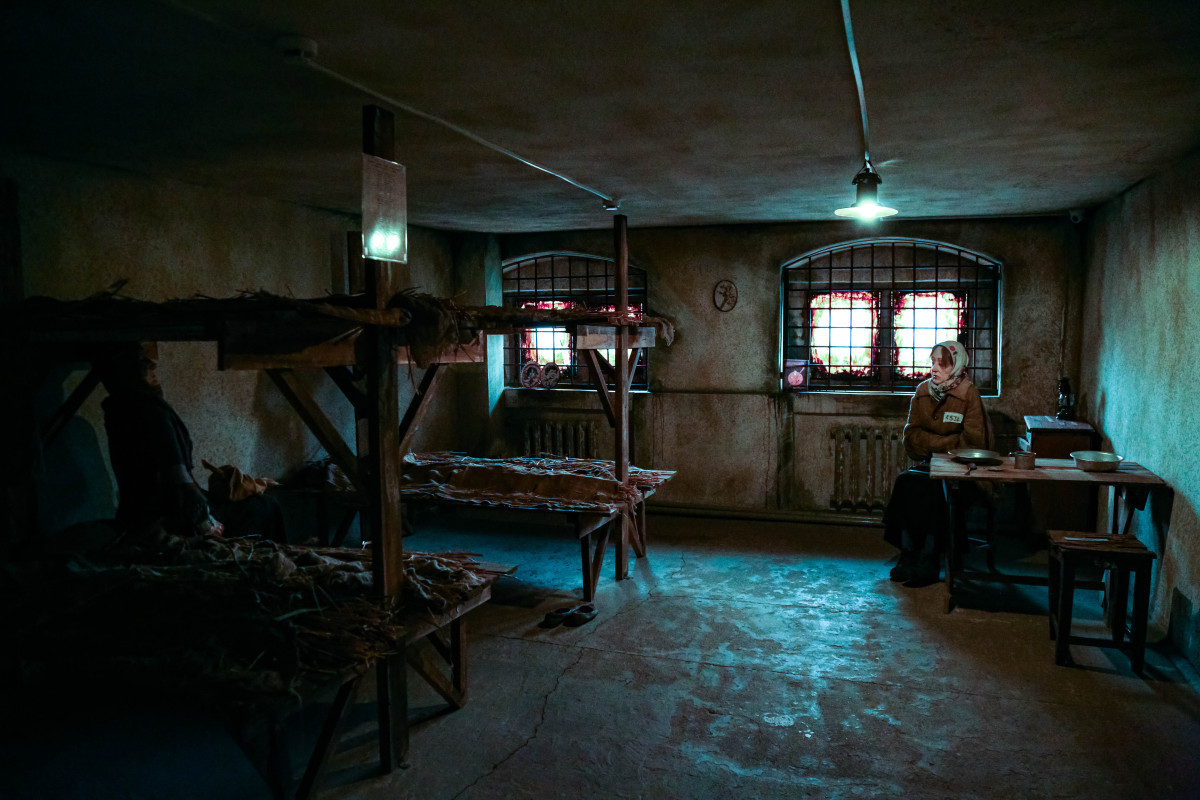
The main activity of the Karlag prisoners was quarrying stone for the construction of highways. People were dying from cold, hunger, and physical exhaustion. Photo credit: el.kz.
During the Soviet repressions of the 1930s to the 1950s, the Karlag was the largest branch of the Gulag system of forced labor camps throughout the Union of Soviet Socialist Republics (USSR).
Karlag was constructed in the vicinity of Karagandy in the 1930s. It accommodated approximately 65,000 prisoners and individuals forcibly resettled within its confines. Documents attest that approximately a million prisoners passed through Karlag, primarily working in coal mines.
Karagandy Ecological Museum
In Karagandy, visitors will find the country’s only environmental museum, which was established in 1995. Its diverse exhibits include fragments of aircraft and rockets, along with industrial and military machinery spanning the Soviet and post-Soviet eras.
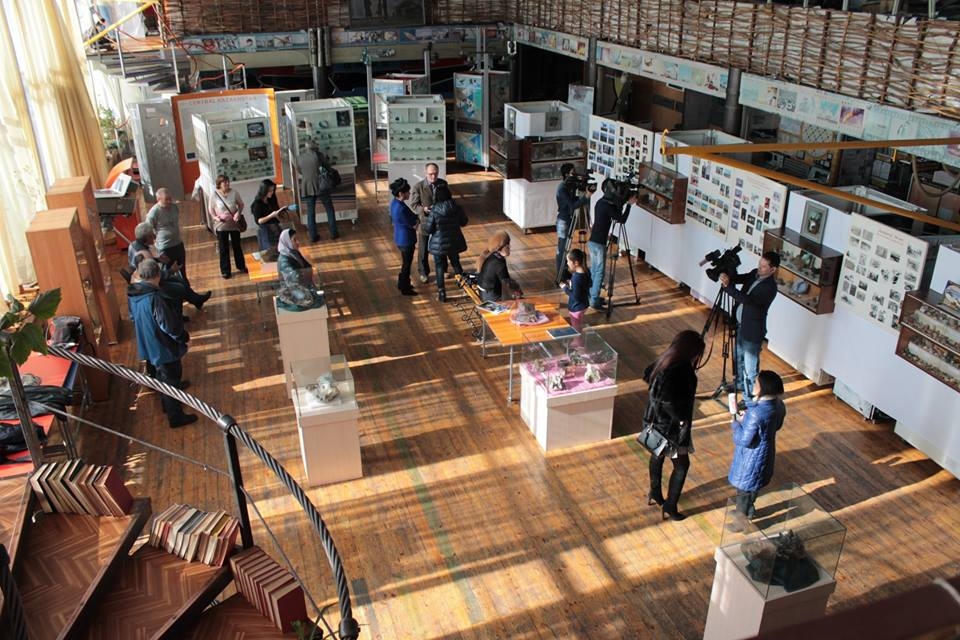
The Karagandy Ecological Museum also attracts volunteers for participation in activities aimed at preserving and protecting the environment. Photo credit: novoetv.kz.
Apart from that, the museum carries out research studies on environmental problems at the Baikonur Cosmodrome, the Semipalatinsk nuclear test site, and the Sary-Shagan anti-ballistic missile testing range.
The museum also has a tourist information center, which organizes sightseeing tours across the country’s most notable attractions.
Karagandy Regional Museum of Local History
For more information on the historical heritage of the city, one should visit the Karagandy Regional Museum of Local History.
The museum has existed for nearly a century, encompassing the history of the region from ancient times to the present. It boasts over 134,000 exhibits across 14 halls.
The two-story building comprises four sections: general history, archaeology and ethnography, modern history, and educational outreach.
Karagandy Regional Museum of Fine Arts
The city of Karagandy is the birthplace of remarkable individuals whose names are etched in the history of Kazakhstan. It is the hometown of many renowned artists, such as Aubakir Ismailov, Myngysh Abylkassov, and Viktor Krylov, among other art masters, whose works are showcased in the Karagandy Regional Museum of Fine Arts.
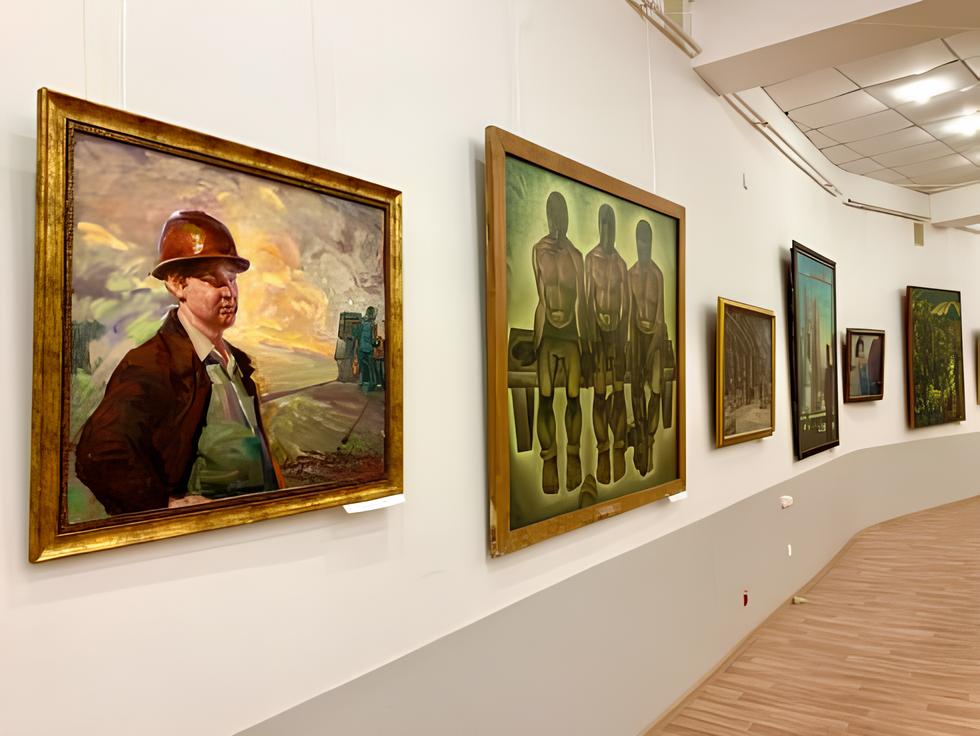
Photo credit: artofher.kz
One of the museum’s flagship features is its collection of artworks by repressed artists. The art history of Karagandy dates back to the Stalinist era when the city was the center of labor camps in Kazakhstan.
The collection of folk decorative and applied art features over 200 museum items created throughout various years of the 20th century. The centerpiece of the collection is a yurt (a nomadic house) from the mid-20th century. Notable pieces include samples of equestrian equipment, traditional felt and woven carpets.
Cathedral of the Blessed Virgin Mary of Fatima
The largest cathedral in Central Asia is located in Karagandy. Made primarily of bricks, the Cathedral of the Blessed Virgin Mary of Fatima follows a basilica-style architecture.
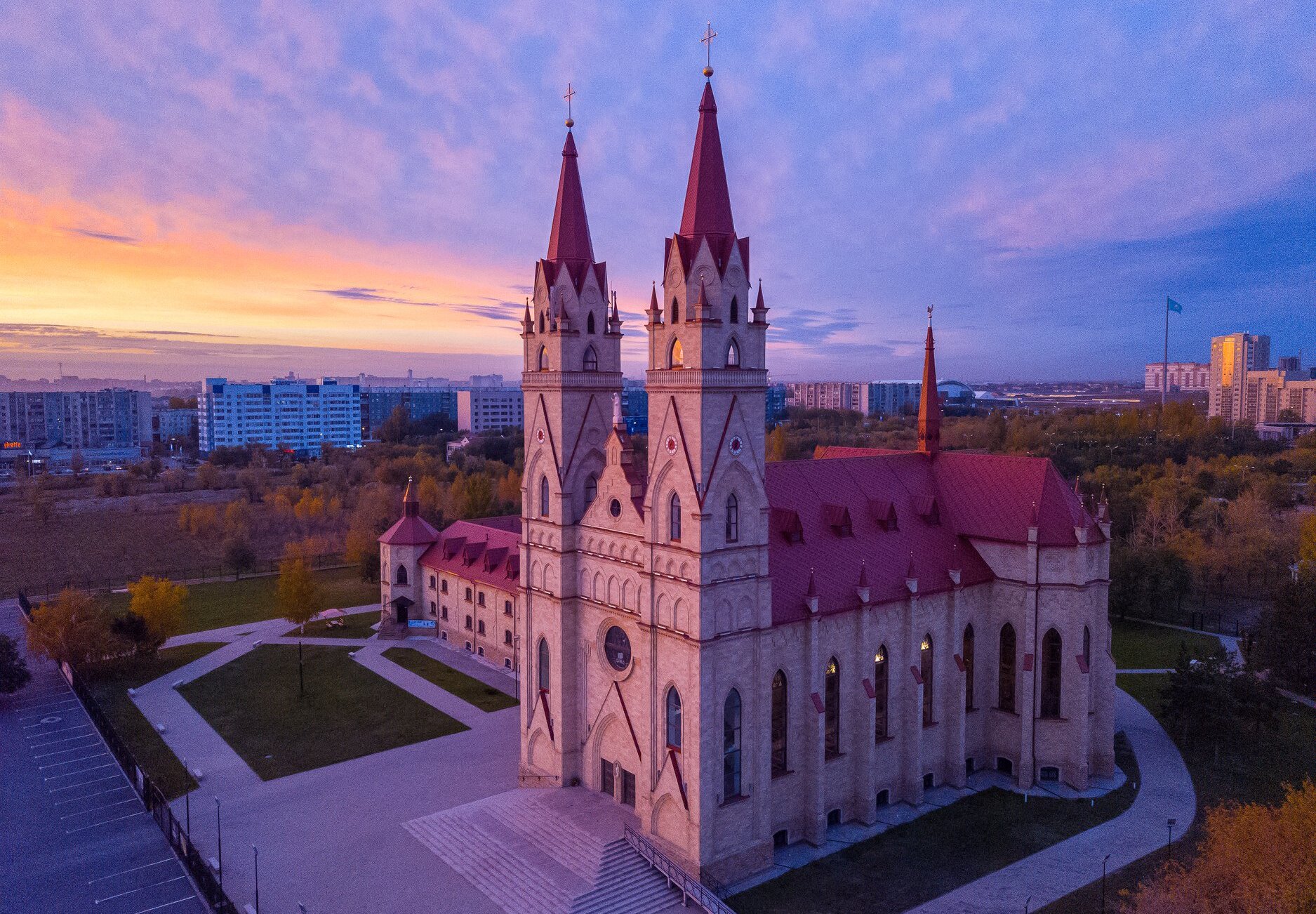
Cathedral of the Blessed Virgin Mary of Fatima. Photo credit: Evgeny Tkachenko
The facade of the neo-gothic cathedral features two bell towers. The left tower houses a set of 16 small bells, while the right tower holds a massive bell crafted in Austria. The cathedral’s total height is 22 meters, with an external length of 50 meters and a width of 30 meters.
Construction of the cathedral began in 2002 and ended in 2012. The project received funding from international donations as a tribute to the victims of the communist regime’s persecution.
Karkaraly National Park
Tourists should carve out time to enjoy ecotourism, a popular activity in Kazakhstan. The Karkaraly National Park is an excellent destination for nature enthusiasts.
The park is one of the specially protected natural areas. Its ecological value is determined by its exceptional diversity—the tourist spot offers a diverse landscape of mountains, lakes, forests, and archaeological sites.
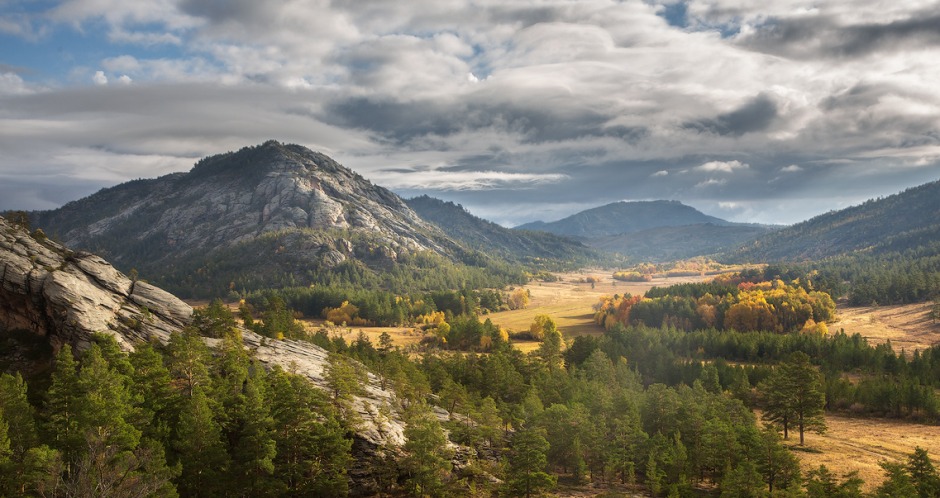
Karkaraly National Park. Photo credit: qazaqstan3d.kz
The park is also home to 46 species of mammals and 234 species of birds.
One of the most popular destinations in the park is Lake Shaitankol (Devil’s Lake), which is situated at an altitude of 1200 meters above sea level.
The history of the lake is shrouded in numerous legends and mysteries. According to stories of local residents, there are neither animals nor birds within a radius of several hundred meters from the reservoir.
Kyzylarai mountain and forest oasis
Another fascinating spot is the Kyzylarai mountain and forest oasis located 300 kilometers south of Karagandy.
Located on its territory, the Kyzylarai Mountains are notable for their pristine nature, with tourists being still quite rare visitors here. The mountains were formed as a result of volcanic eruptions.

The Kyzylarai mountain and forest oasis. Photo credit: silkadv.com.
The natural site is the sole habitat for argali sheep in Kazakhstan. The area boasts a rich and diverse wildlife, including deer, saiga antelope, wild boar, wolves, foxes, hares, goitered gazelles, corsac foxes, badgers, and Siberian roe deer.
Additionally, this area is home to the Begazy-Dandybayev megalithic mausoleums and Bronze Age petroglyphs.
The Kazakh city of mine workers is also transforming into the country’s IT hub, focusing on the development of creative industries. The Terricon Valley project, which was initiated by the city’s residents, provides space for the development of tech startups, collaboration, educational training, and creative events.


